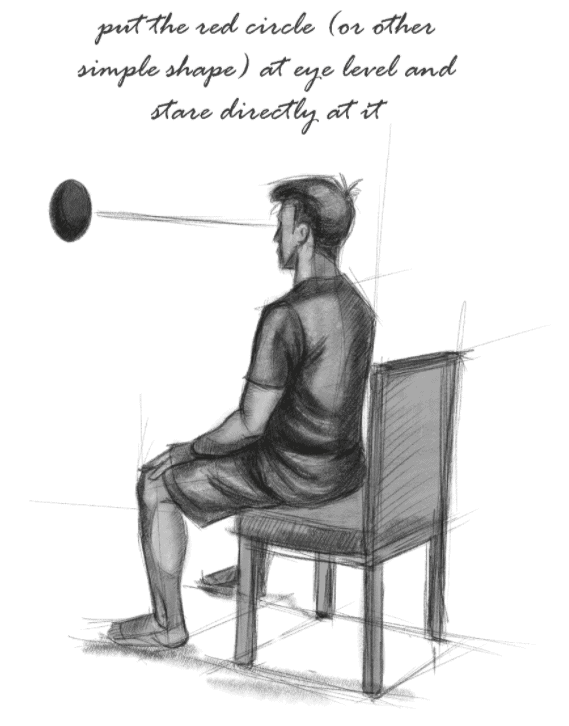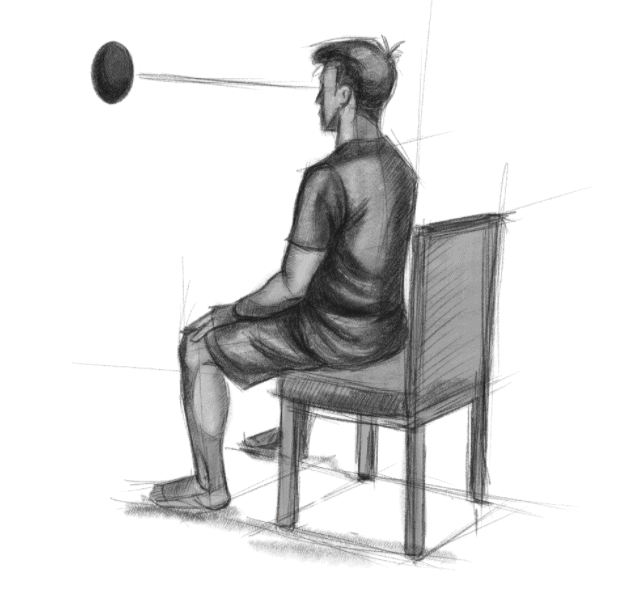
Chris contacted me recently to see if I wanted to share anything on this page from my new book, Dancing Between the Opposites: A Daoist Guide to Balance and Self-Cultivation, in celebration of its recent release. With Covid forcing many people to stay inside and spend a lot of time with themselves, and the many pressures of the modern world really starting to make themselves apparent, it is becoming obvious that as a culture we could all work on being in a better relationship with ourselves – in particular our minds. This being the case, I thought a section from the book on the training of the mind from the perspective of the Da Xuan tradition would be most appropriate. Below is an excerpt from the book, slightly amended to read more fluidly in article form. If this article has caught your attention, follow the link above to grab yourself a copy of the book, which goes into a lot more depth. Enjoy!
*****
We have plenty of meditation practices in Da Xuan and I cannot talk about training the mind without discussing the term a little. It’s a hot topic these days and, as a result, the word has been hijacked by popular culture to refer to many different things, which confuses the topic considerably. I regularly hear people say things like, ‘*insert activity* is my meditation’ (where the activity is anything from running to gardening, or from knitting to hiking). While it may be a soothing or relaxing experience, or give you some much needed time to let the mind wander free from the constant attention to everything that is asked of us today, this has little to do with revealing the truth of who we are, nor does it really train us to keep our mind strictly in one place for long periods of time. Having activities like these to absorb ourselves in can produce many wonderful results, but they do not produce the same results as specific meditation practices, so cannot act as a substitute for them. When meditation means everything—from disconnecting from the hustle and bustle to relaxing to breathing to sitting still and doing nothing—it means nothing at all. We must bring back clarity by being precise with our terms.
In Da Xuan we have two sides to the training of the mind: meditation (called Shen Dan) and training the mental qualities (called Shen Gong). We say ‘who we are’ is made up of three parts: who we really are, who we think we are and who we pretend to be. Meditation, as we define it, is a very specific practice that is to do with realising (and later being able to freely access) who we really are. It is a process of surrender and putting down control which allows us to return to our source, which is unborn, undying, infinite and completely perfect. It’s a deep topic, as you might imagine.
On the other side of the spectrum we have the training of the mind (Shen Gong), which is about practices that build specific mental qualities such as the ability to concentrate on a single point for a long period of time without thinking about other things, and the ability to maintain a general awareness of your surroundings while keeping your precise focus. You can build very strong mental qualities and have made no inroads at all into meditation, but it is very difficult to make any kind of progress in meditation without having strong mental qualities. Practically speaking, we work on the qualities first, and then go about doing our meditation once the qualities of our mind are sufficiently developed.
If the whole bit about meditation being related to accessing the infinite part of ourselves has caught your interest, I would highly recommend following a teacher and tradition with a long history of accomplishing such things – it’s a risky and dangerous business to be doing it on your own; there are many dead ends and traps that can leave you worse off than when you started. For these reasons and because of the depth of the topic, I will stick to discussing the training of mental qualities, which are not dangerous at all and will prepare you nicely should you want to embark on a meditation practice.
Training the Mind (Shen)
As we just discussed, the Daoist term for working on the qualities of the mind is Shen Gong. Shen simultaneously refers to the mind and spirit, and Gong simply means to work on or train something.
In Shen Gong we are developing capacity to direct, focus, stabilise and relax the mind. You can think of the mind like a torch with an aperture. Firstly, we can point the torch at different things and bring the light of awareness to them (focus). We can also keep the torch pointed at one thing for long periods of time without moving it around (concentration) or open the aperture to have a softer, more diffuse light filling a large space. Whatever the light touches is illuminated in our consciousness (awareness). The aperture of the mind can be opened widely to light the entire space like a lamp or closed tightly to direct our attention to a specific point like a laser.
Think of being in a cinema or reading a message on your phone. Our mind narrows onto what we are doing and we can get so absorbed in this concentrated focus that we lose awareness of what is going on around us. Alternatively, we can open the mind right up to experience everything that is going on at once. Imagine being in a big shopping centre and taking in all the sights and sounds – we become aware of many things going on, it’s very busy and we tend to lose our capacity for specific focus. This is the general awareness that is the other side of the coin.
In Da Xuan, the word mindfulness has a very specific definition. It means simultaneously keeping awareness of the specific (the laser) and the general (the lamp), both internally and externally. To be absorbed in the specific, at the loss of awareness of the general, or to be absorbed in our internal world at the expense of the external world—even if you are doing a great internal practice—is to lose mindfulness. Likewise, to only have general awareness without a capacity to focus on a specific point misses the mark too. Most people are able to access this kind of multi-spectrum awareness that we call mindfulness for a few seconds without practice. But it takes a lot of practice to maintain it for minutes, hours, days or weeks without interruption and, even more to be able to maintain this constantly throughout the dynamic parts of life. To train it, we must train in a way that changes the conscious and unconscious parts of the mind, the latter of which is often more responsible for causing us to become distracted or absorbed by a particular sliver of what we perceive.
Two points about training the mind (and practice in general). Firstly, even if you think things are going horribly wrong somehow, you can always use this to learn about how you function (thinking things are going wrong is one of many functions the mind excels at!). Secondly, remember that results don’t dictate results, intention dictates results – a baby learns to walk by intending to learn how to walk, not by being excellent at it on the first go (or the millionth go).
GETTING TO KNOW THE MIND
I’ll talk more about intention soon, but let’s go into more detail on the first point: understanding that a big part of the work on the mind is the simple task of getting to know the mind. To begin our practice, we sit down with an exercise and with an intention for the mind to do something specific. When it inevitably doesn’t do it, we get some very interesting information. First of all, we start to see that we do not have as much control of our minds as we thought, unknown and uncontrollable factors send our attention this way and that, despite our best efforts. If we read into this a little, we might be able to see that we aren’t our mind – if we were, surely, we could just do what we wanted. The mind is not at all who we are; it’s much more like a roommate who talks too much but can also be amazingly helpful. We want to start to get to know the way the mind operates. It has a little (read:big) bag of tricks that it uses to distract us from the task we set it. When we direct the mind to do something apart from its normal free-for-all of thinking and pretending to be in charge, it puts it in the position of being the servant instead of the king. Like anyone being dethroned, the mind is not, at first, fond of the notion of service and so will begin to use all the tricks it has at its disposal to prevent you from usurping it. If we are steadfast in our resolve to stay with the exercise, slowly the mind will reveal more and more tricks as it tries desperately to stop you. Distracting thoughts, false tiredness, defocused vision, optical and sensory illusions like itches and pain, bombardments of thoughts telling you to stop for any and every conceivable reason and many more things can and probably will happen. When we notice these things happen, as well as bringing our attention back to the task at hand, we can take a moment to appreciate that we just learnt another little trick of the mind and as such we know how our mind operates a little more clearly.
Every time you get to the end of your intended practice time without quitting mid-way through, you have made progress in getting to know your mind. You are making it clear, particularly to the unconscious parts of the mind, that no matter what stunt it pulls you will see the practice through and you are also learning how a big part of the mind functions through trickery and deception (which is the normal function of the mind). These tricks can often make you feel as though you are not progressing. The mental qualities tend to seep in sideways; you will feel you are fighting a losing battle against a mind with endless tricks until you pass an invisible threshold and suddenly it doesn’t feel like that and you don’t even really remember when it changed. The opponent has transformed into a willing ally and faithful servant (that will still occasionally try to pretend to be in charge when it finds an opportune moment – what a funny thing the mind is!). When this happens is different for different people and cannot be easily predicted. It will just happen at some point near or far and how long it takes is not a problem at all. I’ll emphasise again: what makes the practices of the mind work best is simply showing up and doing it as best you can and continuing to do so regardless of the perceived results.
It is also worth noting that while this kind of practice may result in an overall more relaxed mind, the practice itself can sometimes be quite a tiring task. We all know this – everyone has experienced focus and concentration become progressively more difficult when they are exhausted. Practising to keep these elements strictly in one place is draining at the time, but will work over the long term to reduce the general overspend of energy we have in the mind. Once these resources have been freed up, you will feel progressively more energised and relaxed when you aren’t doing the practice. It also requires progressively less energy to do our practice as the mind becomes more compliant and willing to be of service.
- Excerpted from Chapter 2: Fundamental Practices
*****
An exercise for the mind to get you started building the capacity to concentrate: Sit comfortably and put a simple geometric shape (circle, square, triangle) of a single flat colour at eye level a metre or two in front of you. A red circle is traditional but any shape and dark colour will do. Stare at the shape without doing anything else, trying only to see the shape. Ignore all else that is going on either internally or externally. Start with 5 mins every day, then work your way up to 30 mins over a few weeks or months.

Illustration by Pelin Ko
Happy training!
Craig

